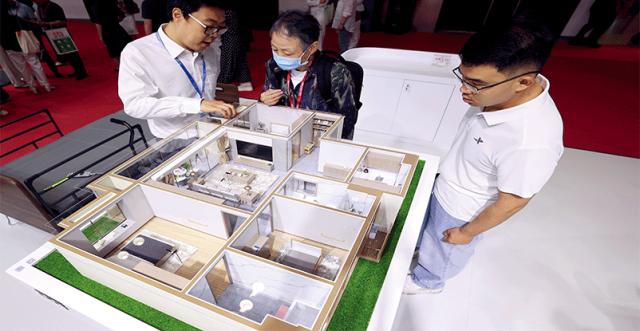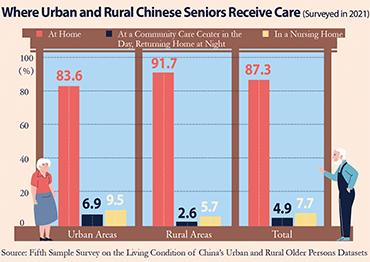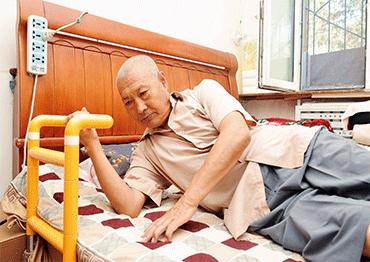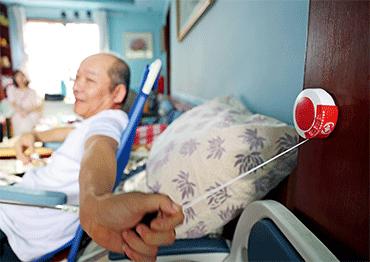However, there is a shortage of professionals to do the appraisals as well as a lack of good quality, age-friendly products to support tailored services.
“Compared to other aging countries, China has 90 percent fewer age-friendly products,” according to Wang Yu, director of the Age-friendly Construction Lab under the China Architecture Design and Research Group. She told NewsChina there is not yet enough expertise in this evolving field.
Wang Hongbing, founder and president of Regard Care, an elderly product supplier in Jiangsu Province, told NewsChina that while the number of age-friendly product suppliers is growing, the quality of products they offer has not really improved.
Zhao Mei from Jiangsu Zhilai echoed. “Take armchairs for example. To ensure they are damp-proof and stable, each arm requires four stainless steel screws. But several years ago, some companies were using iron screws, while others only used two to three screws, which posed a potential safety risk,” she said, adding that age-friendly products on the Chinese market still vary sharply in quality.
“We need a third-party company or authorities to help provide professional quality control and certification,” Xia Mingda from Shenzhen Zuowei Technology said, adding the Chinese market lacks a wide variety of low-end aging-friendly products.
Some experts pointed out that the demand side is what is holding back the industry, as many Chinese seniors do not want to pay for home modifications.
Huang Jia is in charge of the senior home modification program at a community in Beijing’s Haidian District. She told NewsChina that many seniors want to leave their homes to their children. However, some believe that if their home is modified, it could inconvenience their children if they want to live in it. Others worry about moving out during the renovations.
“It’s quite a problem, because if we need to modify a whole property, it could take around six weeks, although we try hard to make it shorter,” Huang said.
“Some in younger age brackets don’t think they need to have it done now, and older seniors are reluctant to pay,” Wang Hongbing said.
Ye Yonghong, the official at the Shenzhen Bureau of Civil Affairs, agrees it is hard to persuade younger, healthier seniors to think ahead about their needs. Shenzhen, which only became a city in 1979 as part of the former Special Economic Zone, is still young. Out of the total city population of nearly 18 million, seniors account for about 7.8 percent, and of those, people aged between 60-69 make up around 70 percent of the senior population.
Despite government subsidies, the unwillingness of seniors to buy age-friendly products and service is partly why profits are low in the industry.
“According to a survey I did, few enterprises established in 2016 and 2017 have survived,” Zhang Jin of the Silver Industry Association said.
Wang Hongbing said that current government subsidies do not allow for the high cost of after-sales service, and many small businesses could not survive due to losses.
“Many seniors are unfamiliar with smart equipment. They don’t know how to charge smart doors or a power lift armchair. They get into difficulties and might ask for a refund or even complain to the community or the authorities, and this really increased after-sales service costs,” he said.
Wang Hongbing believes there is still too much reliance on government subsidies. When Shenzhen lowered the subsidy rate from 80 percent in 2024 to 30 percent in 2025, in line with other cities, Wang’s company only sold 300,000 yuan (US$42,857) in the first month of the age-friendly product program. The new subsidy list has a narrower range of products, with a focus on ones in higher demand, such as wheelchairs and beds, which have lower profit margins.
Xia argues companies have to stop relying on subsidies and start offering better products.
“Our company now focuses on the demands of people with disabilities and have launched intelligent walking robots, intelligent beds, multi-functional mobile hoists, things like that,” Xia said.
Wang Hongbing agrees, predicting that products related to rehabilitation, physiotherapy and healthcare will be in demand. “It will be a new growth point for the industry,” he said.
According to Chu Chu, a Chinese researcher at the University of Tokyo who studies age-friendly home modification in Japan, similar programs in China are in the very early phases, whereas Japan, as a rapidly aging society, started some six decades ago.
Zhou Yanmin, an architecture expert at Tsinghua University, one of the first to promote age-friendly home modification in China, believes that authorities should do more to promote age-friendly ideas and concepts among the aging population and increase public awareness of the need for good living environments for the elderly.
“We need to change elderly people’s ways of life so they can enjoy their later years,” Wang Yu of the Age-friendly Construction Lab said, adding while the government needs to take the lead, efforts should also be market-driven, with more participation from enterprises and social organizations to ensure a sustainable future for the age-friendly sector.
“Some seniors do have money, but they don’t know how to spend it. Once they realize the importance of keeping healthy and leading a rich and vibrant life, demand will rise and consumption will follow,” she said.
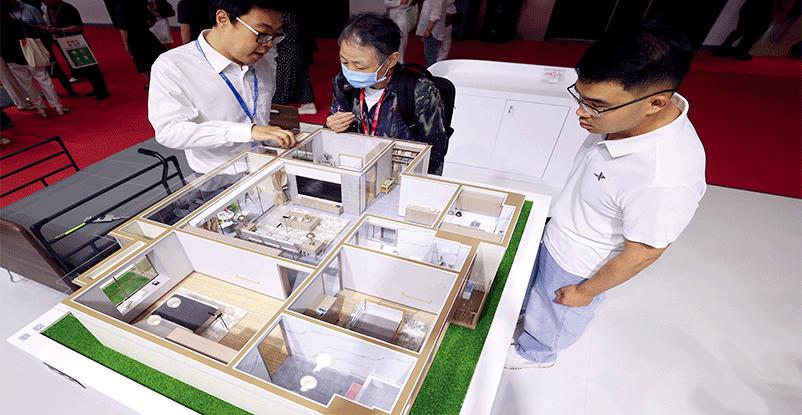
 Old Version
Old Version
